Inside: In part 4 of this 4-part series, you’ll learn how to turn isolated seasonal activities, into four-season rituals that help children connect to the world outside their window. Part 1 explores daily rituals, part 2 weekly rituals, and part 3 monthly rituals.
Rethinking Seasonal Activities
I once taught a College For kids course on bugs. We read about bugs, drew bugs, played bug games, and ate bug snacks. When it was over, I read the parent feedback sheets. One of them said, “She tried really hard, but I wish there had been some real bugs.” Ouch! Of course there should have been some REAL bugs. It seems so obvious now, but theme teaching didn’t provide me with that mindset.
That was a real turning point for me in my teaching. I was using bugs as a vehicle to do some fun activities, but we weren’t really learning much about bugs. Today, I would approach that class very differently. Rather than teaching kids about bugs, we would head outdoors and experience them.
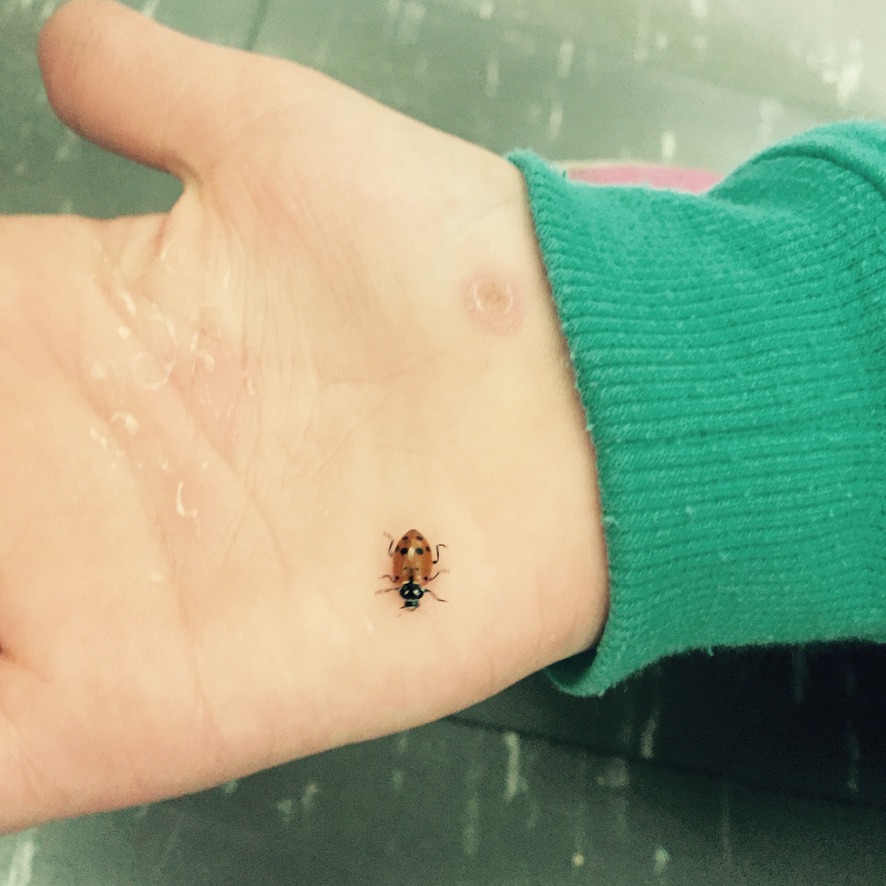
In part 1 of this 4-part series, I wrote about the difference between a routine and a ritual and highlighted 3 ways to create rituals as described by Jacky Howell and Kimberly Reinhard in their book Rituals and Traditions. Part 2 explores building routines and rituals around the weekly cycle and Part 3, looks at monthly rituals that can grow from calendar time and other parts of your day.
In this post, I’ll share seasonal activities, turned rituals, that help my students connect with seasonal cycles and the natural world around them.
Seasonal Activities Across the Year
Rituals are repeated acts. When you take your seasonal activities, and thoughtfully repeat them across the four seasons, you can create rituals that build upon each other and lead to richer, deeper learning. Here are some ways we do that in my kindergarten classroom.
Welcome Parties: Each new season is a cause for celebration! We welcome fall, winter, and spring into our classroom with a seasonal party.
On the first day of fall, we have a scarecrow building party where kids “build” scarecrows through drawing, playing games, crafting, making a snack, and getting creative with loose parts. We also work together to build a giant, collaborative scarecrow that we hang outside our classroom door.
In the winter, we repeat these same centers as we “build” snowmen, and in the spring as we “build” bugs.
Seasonal Rhymes: As part of our calendar routine, we change the seasonal poster on our calendar board and learn the new song. I ask children to think of other things we might do in this new season and we replace the underlined words in the song with their words and sing it again with these new kid-created verses.
Nature Walks: Every fall, winter, and spring, we take a Wonder Walk to look for signs of the season. At points along the way, we “stop and jot” what we observe on our field notes.
Back inside, we color our sketches, share what we found, and create a take-home book to share with families. To find out more about what we do before, during, and after the walk, check out A Fall Nature Walk for Outdoor Learning.
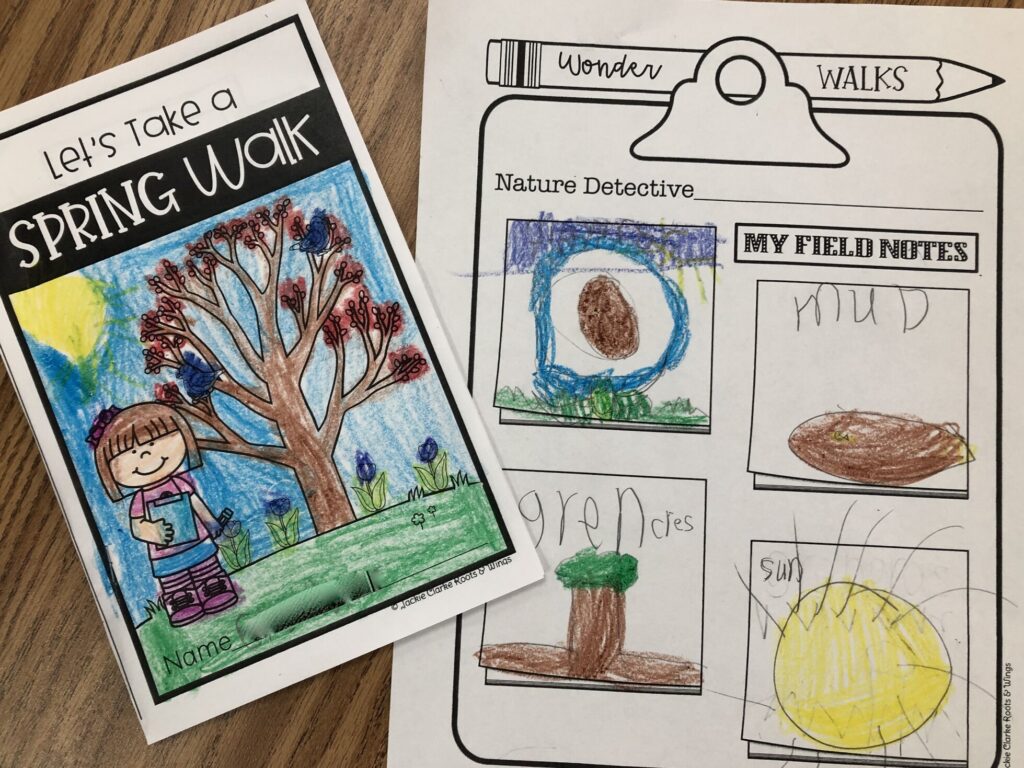
Nature Tray: Following the walk, I invite children to bring in “signs of the season” that they find in their neighborhood. We place these things on our nature tray in our science center. Children can use these items during choice time to explore, observe and sketch.
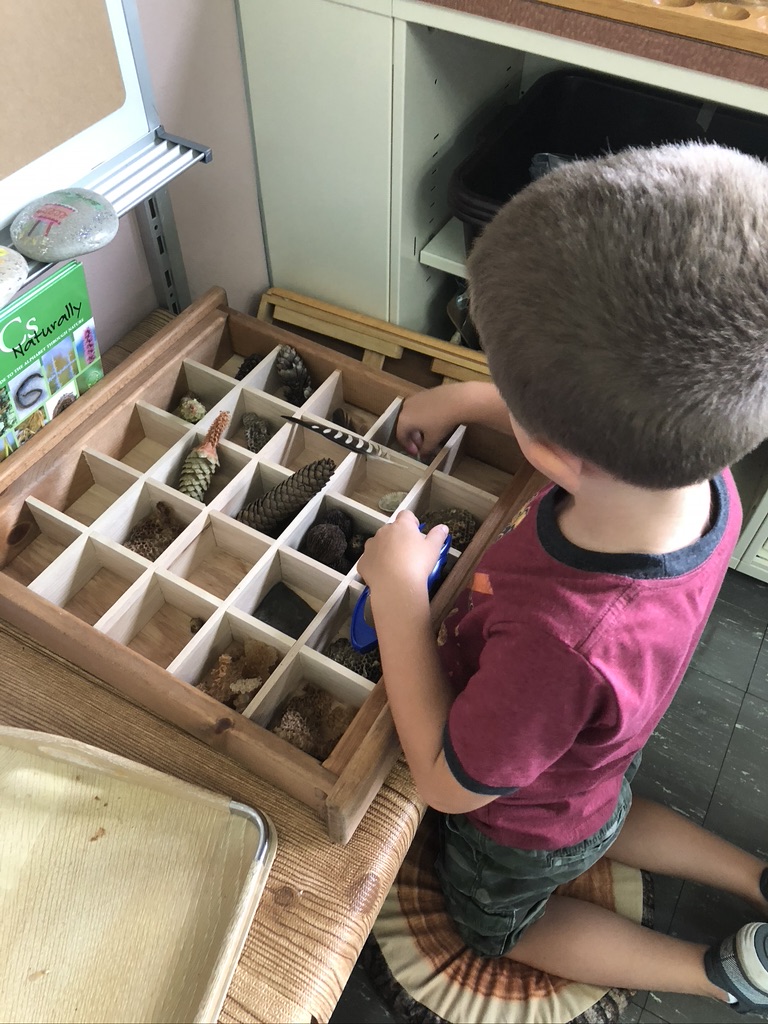
Seasonal Mural: Another extension of our walk, is the creation of a mural that reflects seasonal changes. Children use art materials to recreate the “signs of the season,” and we assemble them into a mural. We use interactive writing to label the pictures and these words become a resource for their spelling all season long.
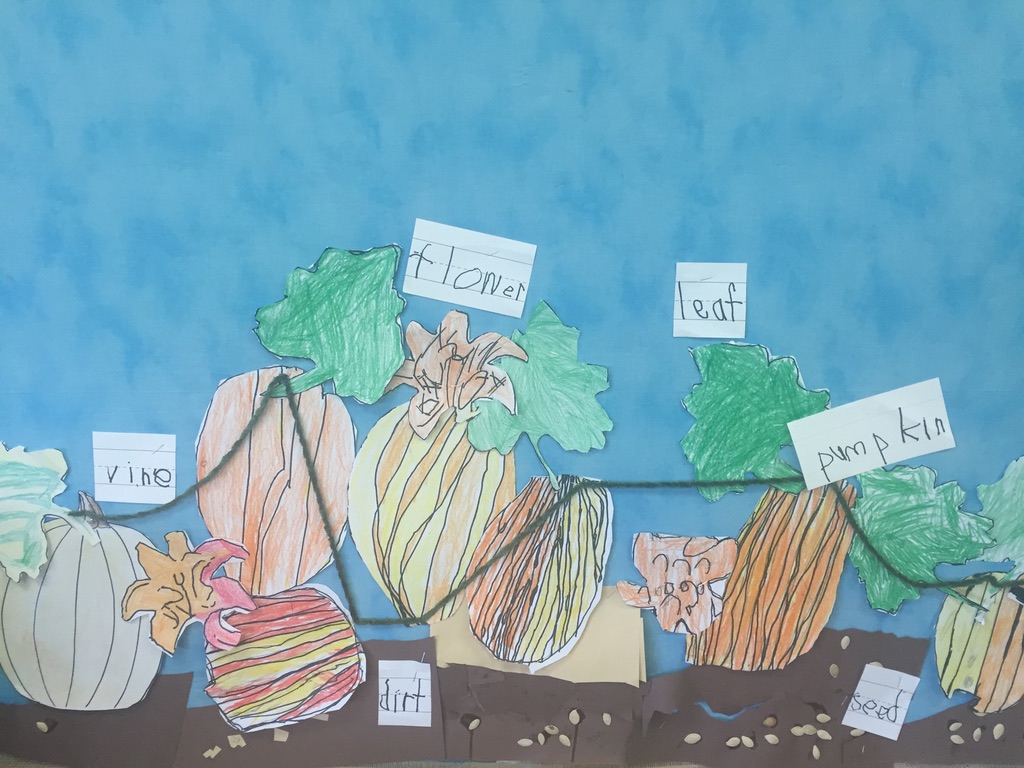
Seasonal Small World: We set up a “small world” area in our storytelling center, where children can bring what they are learning about the seasons into their play. To create one, use a tray or table, and add objects that represent the plants, animals, and weather of that season. Include props, such as unfinished wooden peg dolls, that represent people as well. Remove and add items with each new season.
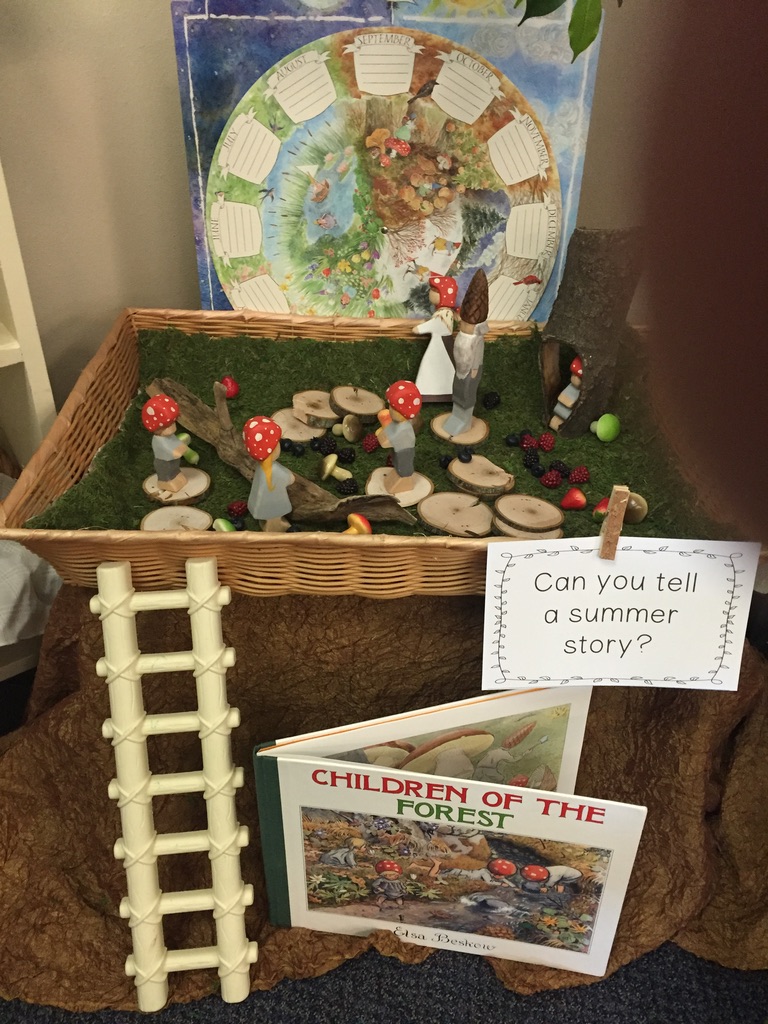
Class Tree: Each season we visit a Class Tree that we “adopted” on our school grounds. The children draw a picture of both themselves and the tree in each season. This is a great way for children to notice seasonal changes, because the act of drawing, requires them to look closely and observe details.
Welcome Party: As an alternative to holiday parties, I love the idea of having a “welcome party,” for each new season. At our Welcome Winter Party, we decorated candles, made pine cone bird feeders, “built” a snowman snack, created collage snowmen, and played snowman games.
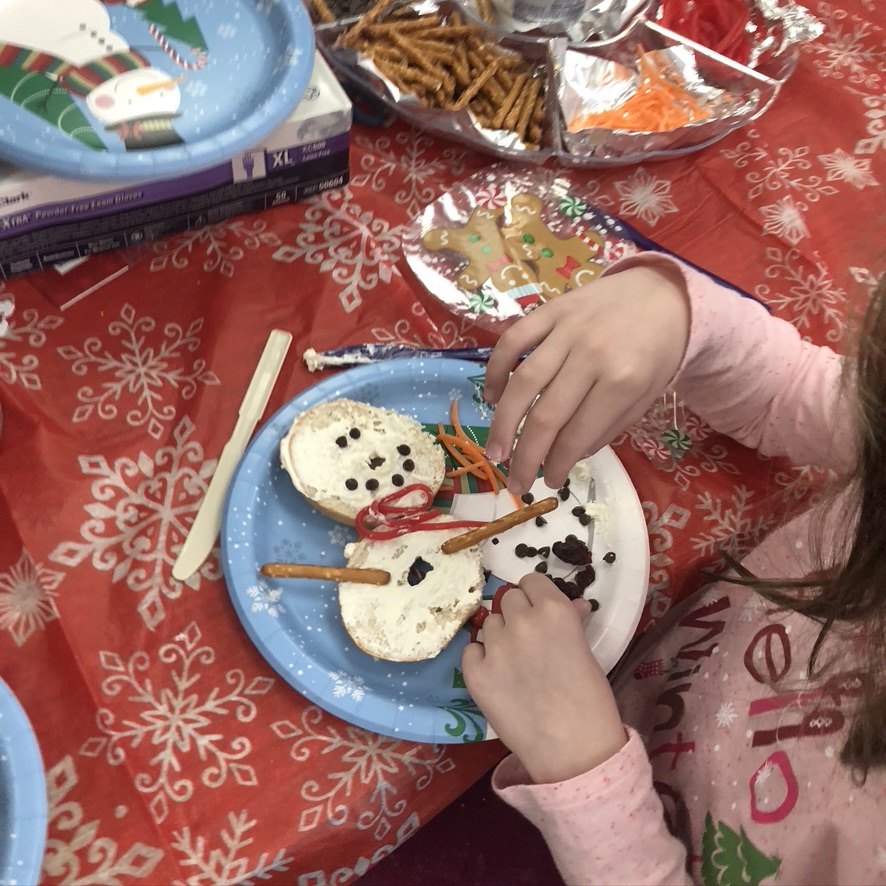
Create Your Own Seasonal Rituals
Use the above list to get you started thinking about what seasonal rituals you want to create and carry out with your own class. And be on the lookout for them to show up organically as you move through the year with your kids.
The idea for the nature tray was born out of children bringing in things like rocks, leaves and pine cones that they wanted to share, but I didn’t really have a plan or place for that.
If you are not sure where to start, begin by listing seasonal activities that you enjoy doing with your children. Then, ask yourself these questions to help you turn them into rituals:
- How can I be more intentional about how this activity is carried out?
- How can I individualize it with something that is meaningful to me or our class?
- Are there tools or materials that I could use to make it more meaningful, fun, or playful?
It might also help to look at your list of seasonal activities and circle those that you would consider an experience vs. an activity. Then, build around those experiences by adding in your favorite books, songs, crafts, etc. to create your own seasonal rituals. This would have been a much better way for me to have approached the “bug” class because experiences naturally lead to richer, deeper learning.
For help on creating your own classroom routines/rituals, download this free Routines and Rituals Toolkit and check out the Growing Traditions page in the Roots & Wings Resource Library.
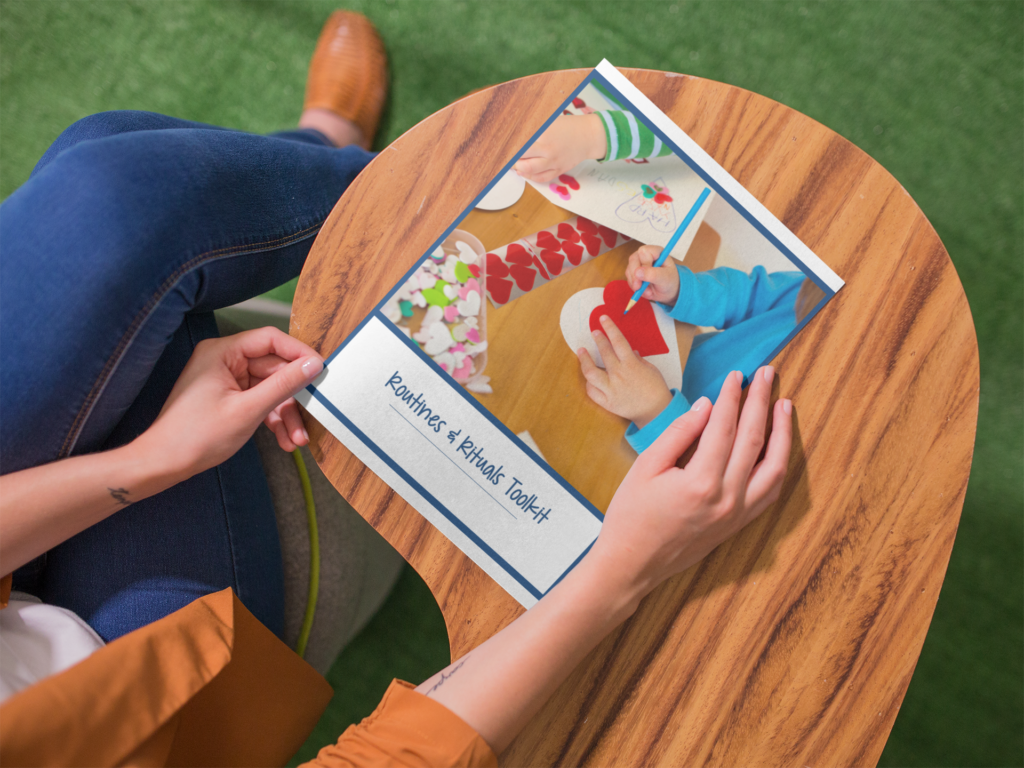
This post contains affiliate links. Roots & Wings is a participant in the Amazon Services LLC Associates Program, an affiliate advertising program designed to provide a means for sites to earn advertising fees by advertising and linking to Amazon.com.






 Meaningful Ways to Open and Close the Kindergarten Year
Meaningful Ways to Open and Close the Kindergarten Year St. Patrick’s Day Activities You’ll Treasure
St. Patrick’s Day Activities You’ll Treasure My Favorite Kindergarten Holiday Craft
My Favorite Kindergarten Holiday Craft Classroom Birthday Board and Display: Ready, Set, Go!
Classroom Birthday Board and Display: Ready, Set, Go!